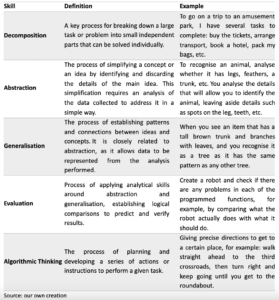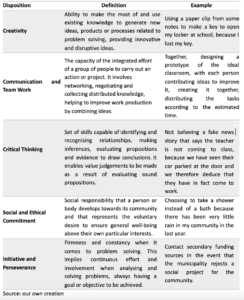As we saw in the previous entries, the concept of Computational Thinking has grown in accordance with the impact technology is having on our societies. The need for an approach less linked to the mastery of specific technologies such as hardware or software and more linked to the human-machine relationship as well as the interaction of individuals in complex environments created by what is known as the Digital Society has become evident. Thus, it is appropriate that we define the most relevant skills for individuals and societies in the 21st century. At ProFuturo, together with the help of Aonia Educación, we set out to create an approach to the concept of Computational Thinking based on the great works of reference, adapting it to the needs of the highly vulnerable environments in which we work.
In this way, we have laid the foundations to be able to build a pedagogical proposal and an operational and working framework that could be applied in the schools we work with. Thus, our objectives with this project are:
- To empower and provide more appropriate tools to reduce the digital gap.
- To assist in the transformation and modernisation of educational curricula, explicitly introducing Computational Thinking as an essential element in itself.
- To promote the introduction of active methodologies in the classrooms, in a progressive and incremental way.
With this perspective and based on studies of previous literature, we constructed a definition of Computational Thinking that would help us to achieve our purpose in a practical way. We therefore consider that Computational Thinking is the set of thought processes for information processing, which are necessary in the digital era for problem solving, applied to various knowledge areas. This definition is accompanied by an operational development, which includes the definition of core processes and dispositions of Computational Thinking as detailed below:
Table I. Definition and exemplification of the core thought processes in Computational Thinking:

Table II. Definition and exemplification of each of the dispositions of Computational Thinking:

The development of this framework can only be aligned with the Global Frameworks for Learning and Teaching in the Digital Age. These frameworks describe a series of tools that ProFuturo makes available to the different educational communities in which it participates. We can even affirm that the work in Computational Thinking comes from the Global Frameworks, developing a part of these linked to the interaction of students with the language of the future, that of robotics and Artificial Intelligence.

References:
Trujillo Sáez, F., Álvarez Jiménez, D., Montes Rodríguez, R., Segura Robles, A. y García San Martín, M. J. (2020). Aprender y educar en la era digital: marcos de referencia. Madrid: Fundación ProFuturo.





